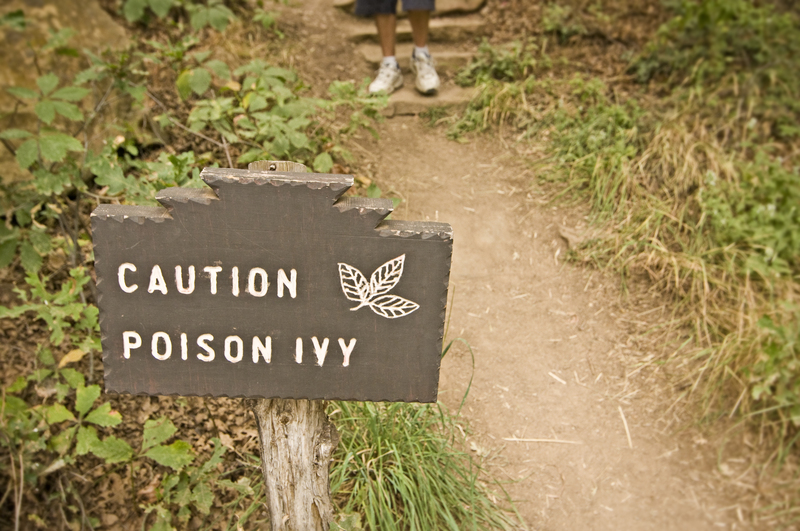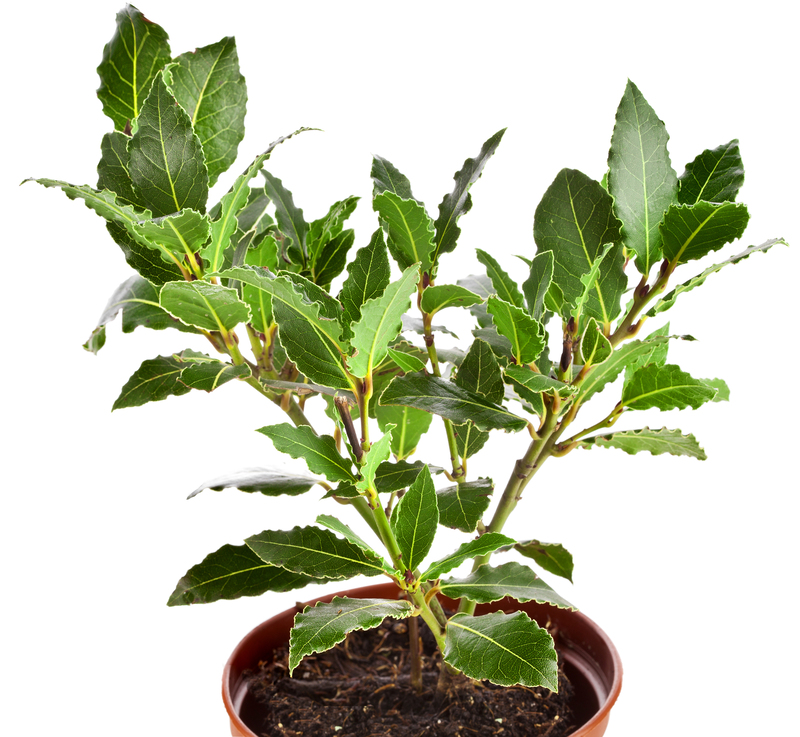Crafting Nutrient-Rich Soil from Discarded Organics
Posted on 13/09/2025
Crafting Nutrient-Rich Soil from Discarded Organics: Transforming Waste into Garden Gold
Nutrient-rich soil is the lifeblood of productive gardens and bountiful farms. But did you know that the key ingredients for this "black gold" are often hiding in your garbage can? Crafting nutrient-rich soil from discarded organics presents a compelling, eco-friendly solution for home gardeners, urban farmers, and sustainability enthusiasts alike. With mounting concerns over landfill waste and declining soil health, transforming kitchen scraps and yard waste into fertile earth is both an environmental responsibility and a gardening opportunity.
Why Recycle Organics into Soil?
Before diving into the practical steps, it's crucial to understand why turning discarded organics into nutrient-rich soil is beneficial:
- Waste reduction: Organic matter comprises a significant portion of household and municipal waste. Diverting it from landfills reduces methane emissions and conserves landfill space.
- Soil enrichment: Homemade composted soil teems with essential nutrients and beneficial microbes, contributing to healthier plants and crops.
- Sustainable food cycles: By reincorporating kitchen and yard waste into the soil, we close the loop--creating a regenerative cycle that nurtures both plants and people.
- Cost savings: Crafting your own nutrient-rich garden soil means spending less on store-bought fertilizers and commercial soil amendments.
- Climate resilience: Healthy compost-amended soils retain moisture better and support plant resilience in extreme weather conditions.

The Science Behind Nutrient-Rich Soils from Discarded Organics
At the heart of fertile soil is organic matter--the decomposed remains of plants, animals, and microorganisms. Discarded organics, such as fruit peels, vegetable trimmings, leaves, and grass clippings, may look like waste, but in reality, they're nutrition-packed resources waiting to be transformed.
The process of turning discarded organic material into nutrient-dense soil is called composting. During composting, microbes break down organic matter, producing nutrient-rich humus teeming with life. This humus not only feeds plants directly but also improves soil structure, boosts moisture retention, and fosters beneficial soil organisms.
Key Nutrients Derived from Organic Waste
- Nitrogen: Essential for leafy growth and lush green plants. Sourced from food scraps, coffee grounds, and grass clippings.
- Phosphorus: Vital for healthy root systems and flower/fruit production. Found in eggshells and some food waste.
- Potassium: Helps plants build resistance to disease and survive drought. Present in banana peels and wood ash (in moderation).
- Micronutrients: Calcium, magnesium, and trace elements, ensuring balanced plant nutrition.
Collecting and Preparing Discarded Organics for Soil Creation
Not all organic matter is created equal. Understanding what you can--and can't--compost is vital when making nutrient-rich soil from organic waste.
What to Compost (Acceptable Organics)
- Fruit and vegetable scraps: Peels, cores, and trimmings
- Coffee grounds and filters
- Eggshells (crushed for faster breakdown and extra calcium)
- Tea bags (without synthetic fibers)
- Grass clippings (use thin layers to avoid matting)
- Leaves and garden trimmings
- Shredded newspaper or cardboard (avoid glossy or colored ink)
- Sawdust from untreated wood
- Hair and pet fur
What to Avoid
- Meat, dairy, and oily foods: Attract pests and slow decomposition
- Pesticide-laden plant material: May harm compost microbes and future plants
- Diseased plants or weeds with mature seeds: Could spread problems in your garden
- Pet wastes: May contain pathogens unsafe for food gardens
- Glossy magazine paper or colored inks: Potentially toxic chemicals
How to Craft Nutrient-Rich Soil from Discarded Organics
Step 1: Start Your Compost Pile or Bin
Select a composting method that suits your space and lifestyle. Traditional backyard compost piles, enclosed bins, or worm composting (vermicomposting) are all excellent options for transforming discarded organic matter into nutrient-rich soil.
- Backyard pile: Easy and scalable; pile materials in a corner and turn regularly.
- Tumbling compost bin: Enclosed, faster results, less manual turning.
- Worm bins: Great for apartments--worms efficiently convert scraps into rich castings for potting soil.
Step 2: Balance Greens and Browns
Successful composting for highly fertile soil is all about the carbon-to-nitrogen (C:N) ratio.
- Greens: Nitrogen-rich materials (kitchen scraps, grass).
- Browns: Carbon-rich matter (dry leaves, cardboard).
Step 3: Moisture and Aeration
Compost microbes, much like plants, require air and moisture to thrive. Your pile should feel as damp as a wrung-out sponge--not too soggy, not too dry. Turn the materials every week or two to incorporate oxygen and prevent anaerobic (smelly) conditions. Adequate oxygen speeds up the conversion of discarded organics into garden-ready soil.
Step 4: Monitor and Maintain
-Compost is a living process. Use a thermometer or simply check the pile for heat--it should warm up as microbes work.
-If decomposition slows, add more greens, chop materials smaller, or turn more frequently.
-Keep an eye out for pests and correct moisture and ingredient imbalances as needed.
Step 5: Harvesting Finished Compost
After 2-6 months (depending on method and season), your composted soil should look, feel, and smell like rich, crumbly, dark earth. There should be few recognizable scraps left.
- Screen out large chunks: Sift your finished compost to remove twigs or incomplete bits, returning them to the next batch.
- Cure if needed: Let compost rest for a couple of weeks before use to ensure full maturity.
How to Use Your Finished Nutrient-Rich Soil
Once you have crafted nutrient-rich soil from organic waste, it's time to boost your plants and garden beds! Here are some smart ways to use your homemade compost:
- Soil amendment: Mix several inches of compost into garden beds in spring or fall for healthy, vibrant soils.
- Mulch: Spread a layer over the surface of soil to suppress weeds and retain moisture.
- Potting mix: Blend compost with coconut coir, perlite, or garden soil for seed starting and container plants.
- Compost tea: Soak bagged compost in water for a few days, then use the strained liquid to water plants and deliver nutrients directly to the roots.
Advanced Techniques for Superior Soil from Discarded Organics
To take your garden or farm to the next level, consider these advanced techniques for crafting nutrient-packed soil:
Hot Composting
By creating large piles (at least 3x3x3 feet) and maintaining consistent moisture and turning, you can achieve "hot composting." This method reaches higher temperatures, destroying weed seeds and pathogens faster, yielding finished nutrient-rich soil in as little as three weeks.
Bokashi Fermentation
For those limited by space or seeking to reuse even meat and dairy waste, Bokashi composting uses microbes to ferment organic matter in airtight containers. After several weeks, the fermented material can be buried in the ground to break down, feeding your soil even more diversity of organic nutrients.
Biochar Addition
Mixing small amounts of biochar (charred organic matter) with your compost increases nutrient retention, improves water holding, and fosters beneficial microbes--the ultimate recipe for nutrient-dense soil from discarded wastes.
Frequently Asked Questions about Crafting Nutrient-Rich Soil from Discarded Organics
- Is homemade compost safe for vegetables?
Yes, finished compost made from plant-based kitchen and yard waste is ideal for vegetable gardens. Avoid composting meat, bones, pet waste, or diseased plants for food-growing use. - How can I speed up my compost?
Chop or shred materials smaller, balance greens and browns, turn the pile more often, and keep it moist (but not soggy). Hot composting methods are fastest. - Why does my compost smell bad?
Rotten odors usually mean too much moisture, not enough air, or too many nitrogen-rich materials. Add dry browns and turn to aerate.

Environmental and Community Benefits
Crafting nutrient-rich soil from discarded organic materials is not only a boon to your garden, but also to your community and the planet:
- Reduces landfill methane emissions (a potent greenhouse gas).
- Decreases the need for chemical fertilizers, which can damage waterways.
- Builds local soils and supports food security in urban and suburban areas.
- Provides a hands-on way to teach families and communities about ecological cycles and sustainability.
Conclusion: Closing the Loop with Discarded Organics
Transforming food scraps, leaves, and other disposables into vital, living soil is sustainability in action. By crafting nutrient-rich soil from discarded organics, you cultivate a garden that thrives, reduce dependence on synthetic inputs, cut waste, and play a vital role in restoring our planet's ecosystems.
Don't let your kitchen and yard waste go to waste. Begin composting today and watch both your plants and your conscience grow healthier every season!



